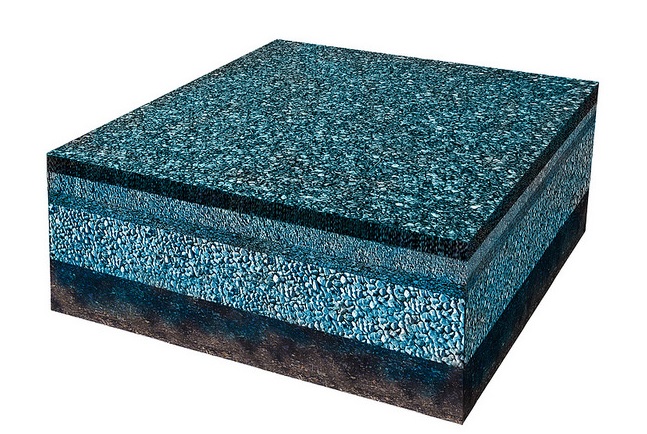How Does It Work - Green Stormwater Infrastructure
Overview
When it rains, stormwater runs off streets and sidewalks into a green stormwater infrastructure (GSI) tool. Water soaks into a stone bed below ground where it is absorbed by plant roots and released through transpiration (the process in which water is taken up by a plant’s roots and transpired through its leaves). Some of the water evaporates from the surface and excess water is slowly released back into the sewer system. Storing water in these GSI systems significantly reduce pollutants entering our creeks and rivers.
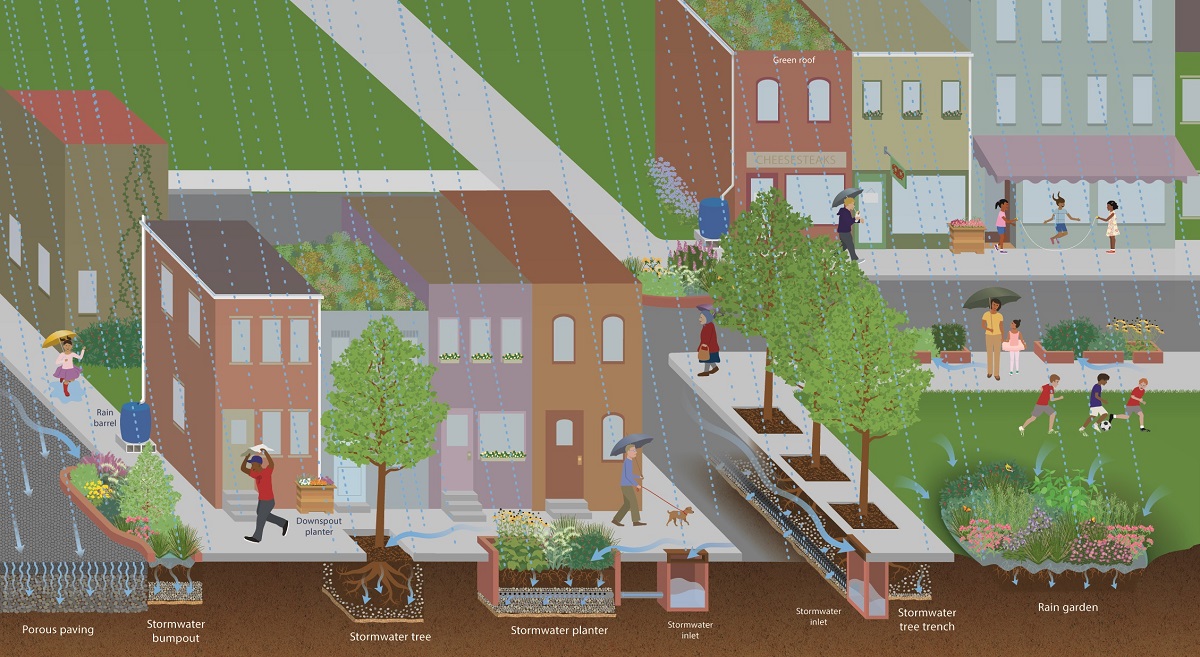
Because of its unique ability to be built into neighborhoods, green stormwater infrastructure enhances the beauty of our communities while improving out waterways.
Stormwater Tree Trench
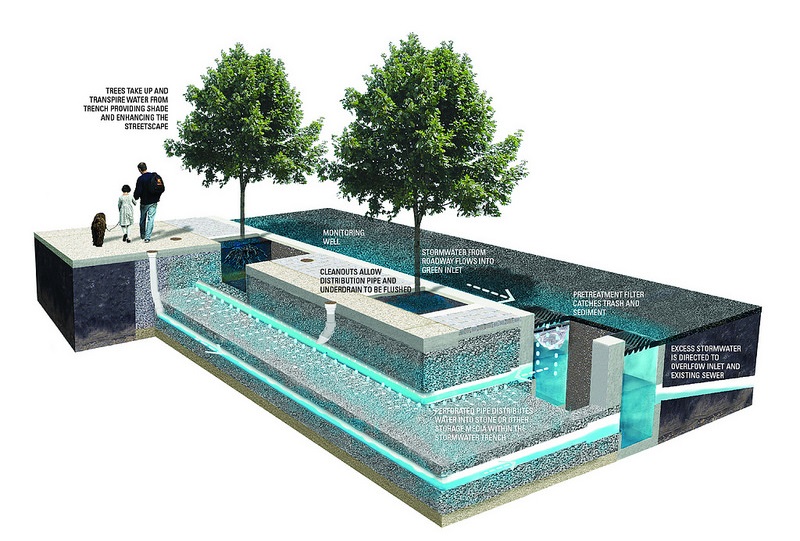
A stormwater tree trench is a system of trees connected by an underground stone bed used for infiltration. On the surface, a stormwater tree trench looks similar to a series of street tree pits. However, under the sidewalk a perforated pipe distributes stormwater throughout the trench. In the pictures below note the double inlets, one green to take water into the trench, and the second to manage any additional water.
 |
||
| Stephen Girard Elementary - South Philadelphia | Waterview Recreation Center - Belfield |
Stormwater Bump-Out
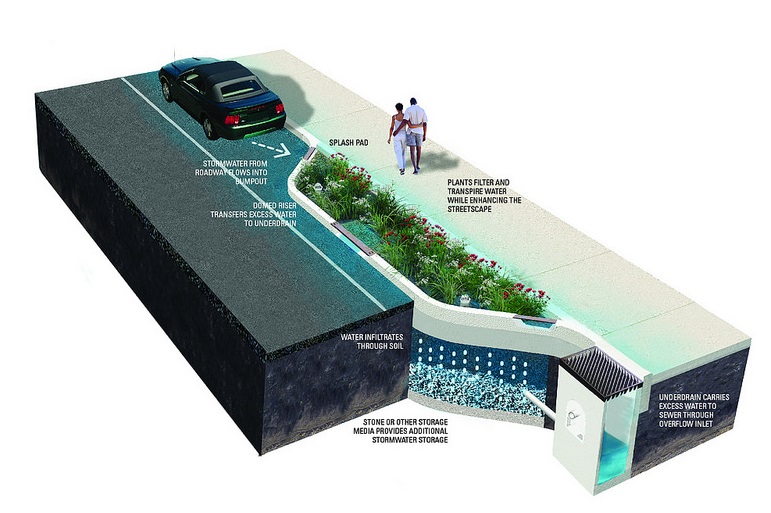
A stormwater bump-out is a landscaped extension of the curb that protrudes into the street at an intersection. A bump-out has a layer of stone that is topped with soil and plants to capture stormwater runoff. In addition to managing stormwater, bump-outs can calm traffic and make intersections safer for pedestrians.
 |
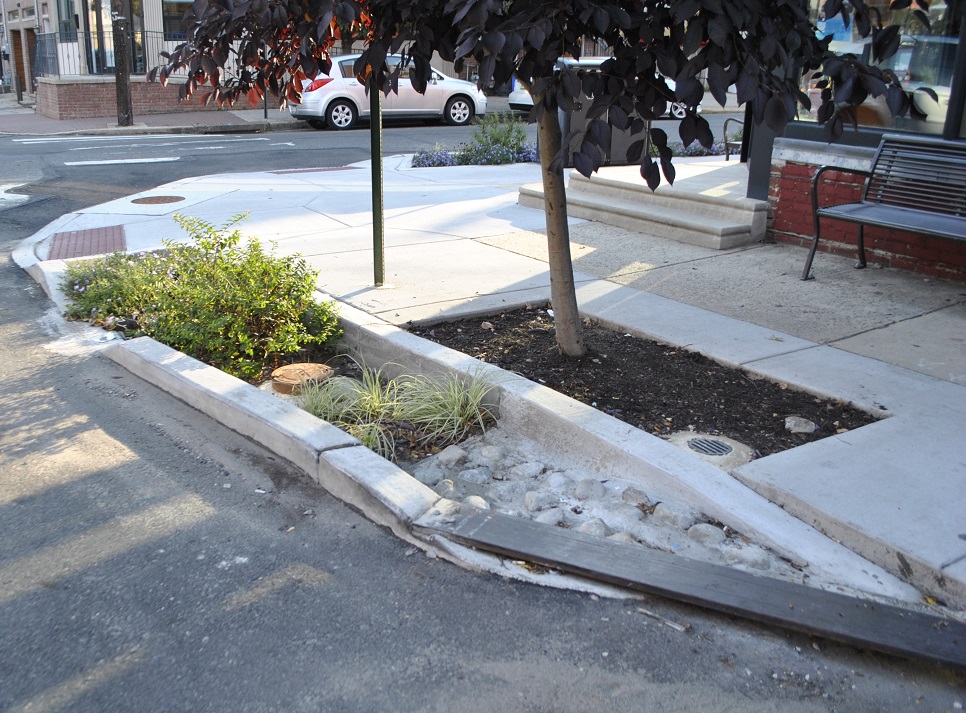 |
|
| Queen Lane Resevoir - East Falls | 3rd St & Fairmount Ave - Northern Liberties |
Stormwater Planter
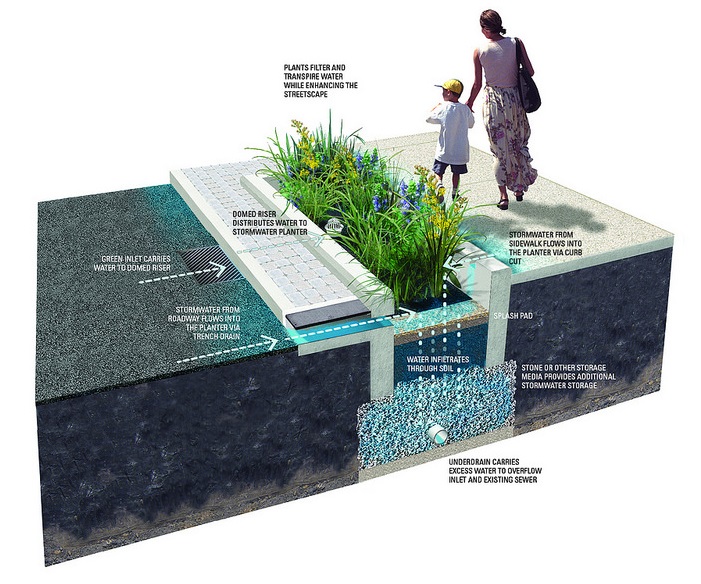
Stormwater planters manage stormwater runoff from the street and sidewalk. They sit below the sidewalk and are filled with plants, soil and stone. A stormwater inlet collects water from the street and directs it into the planter where plant roots can soak it up. The planter also has small openings to capture stormwater flowing from the sidewalk.
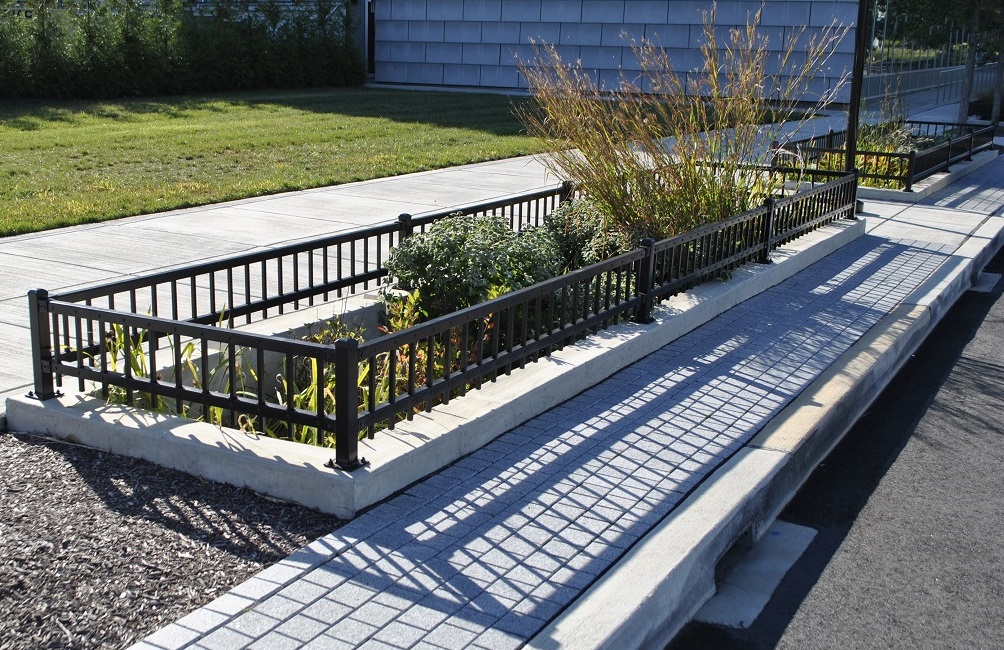 |
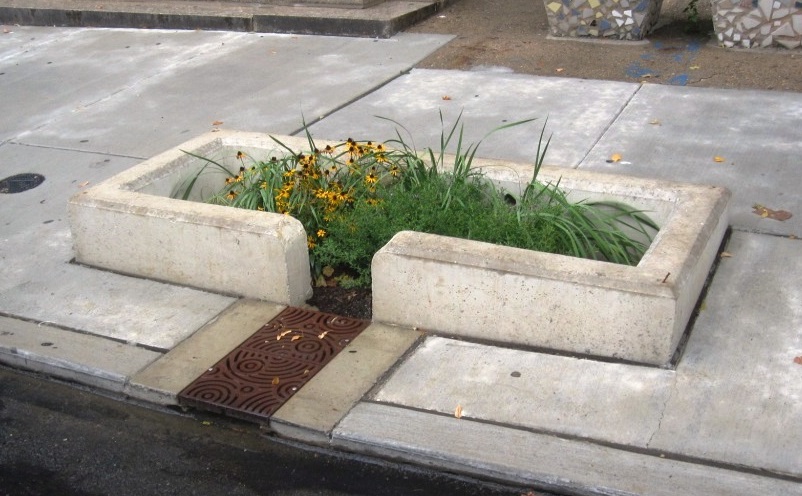 |
|
| The Navy Yard - Southeast Philadelphia | Bodine High School - Northern Liberties |
Rain Garden
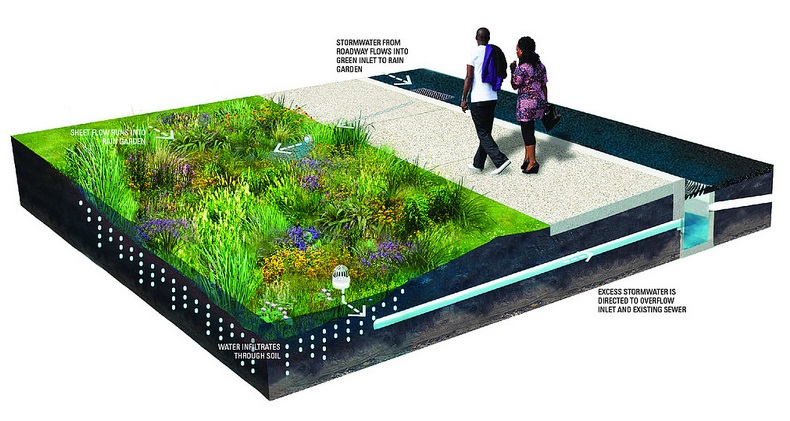
A rain garden is a planted shallow depression designed to catch and filter stormwater runoff from a downspout or nearby street or sidewalk. Plants used in rain gardens are selected for their ability to thrive in extremely wet and dry weather. Rain gardens filter pollutants and replenish groundwater. They are one of the simplest and most effective ways to manage stormwater.
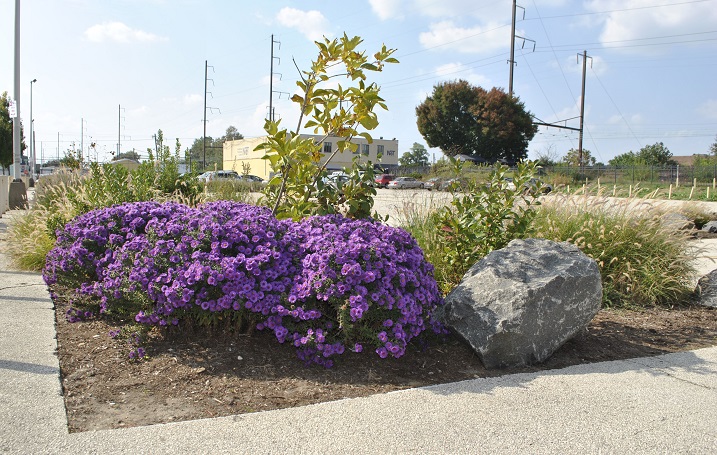 |
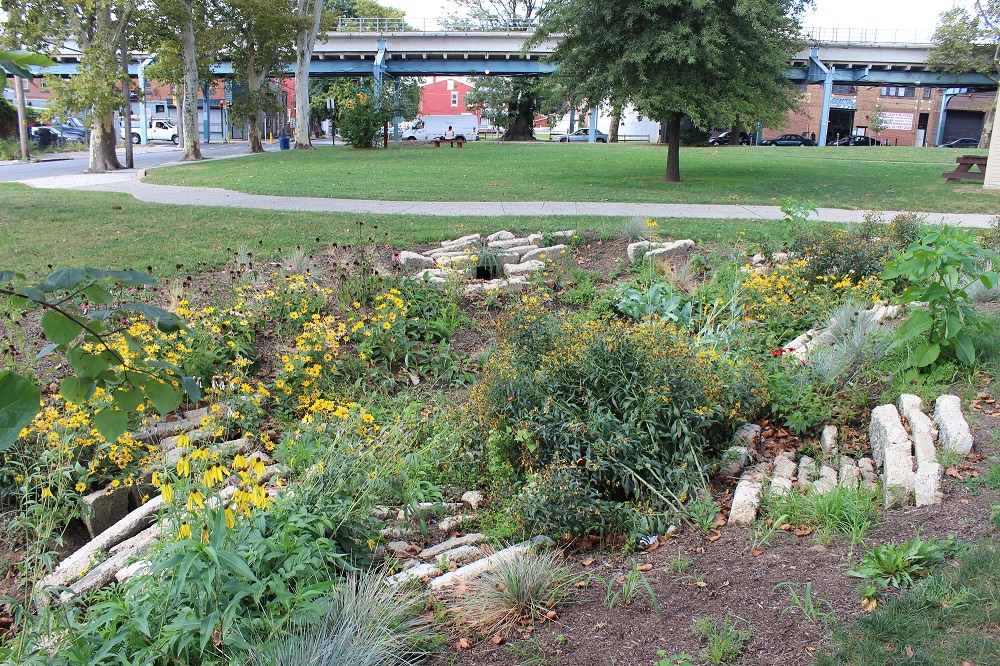 |
|
| Eadom Street - Bridesburg | Womrath Park - Frankford |
Porous Pavement
|
|
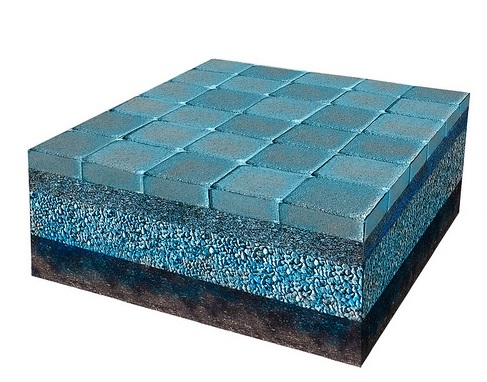 |
Special materials, such as porous asphalt or concrete, and permeable pavers or rubber playgrounds, allow water to pass through their surfaces into the stone and the ground below. These materials slow, redirect and filter water though the soil instead of allowing it to run off into the sewer system.
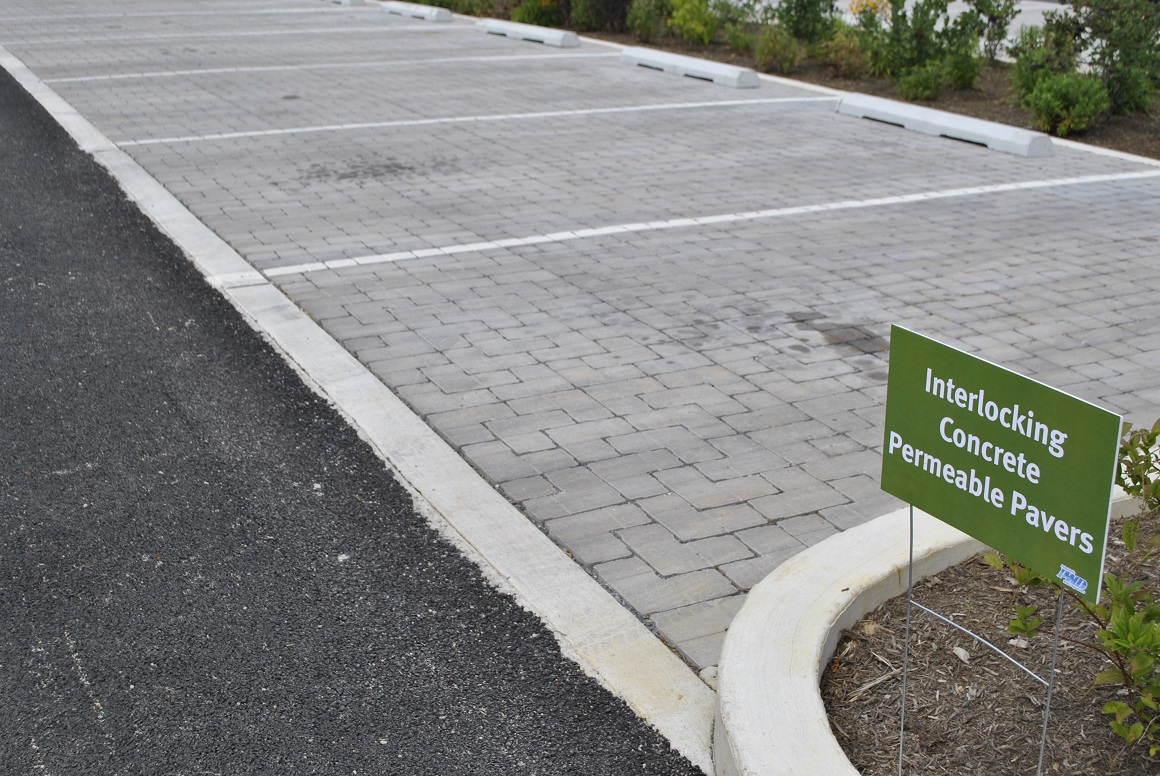 |
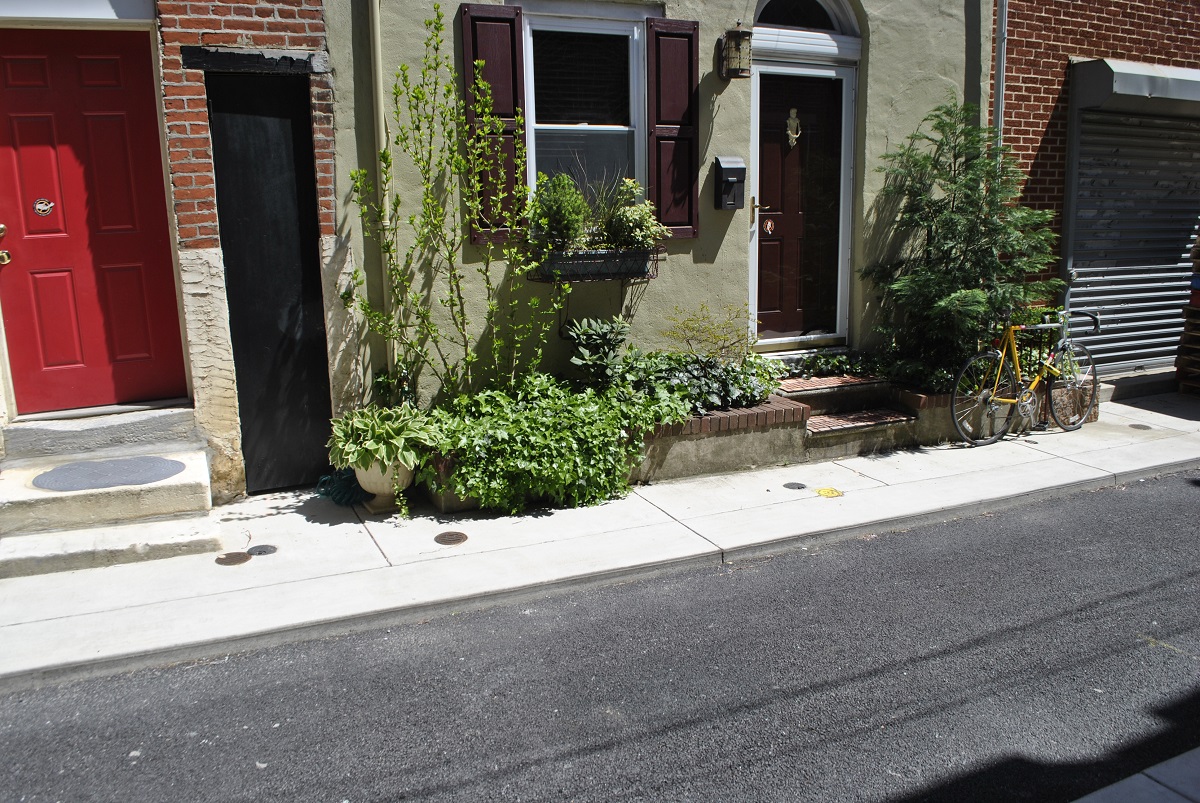 |
|
| Employee Parking Lot - Southwest Pollution Control Plant | Percy Street - Italian Market |
Swale
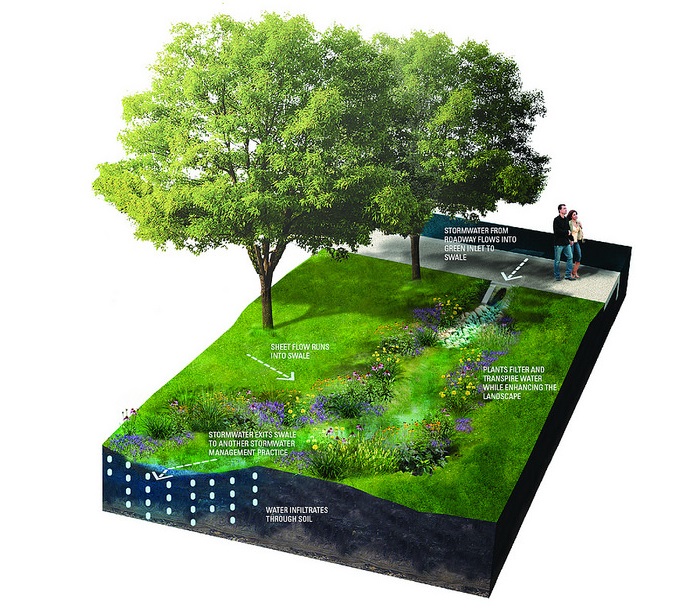
A swale is a grassy depression designed to move stormwater. PWD typically uses swales to channel stormwater from a street or sidewalk to a rain garden or basin.
Stormwater Tree
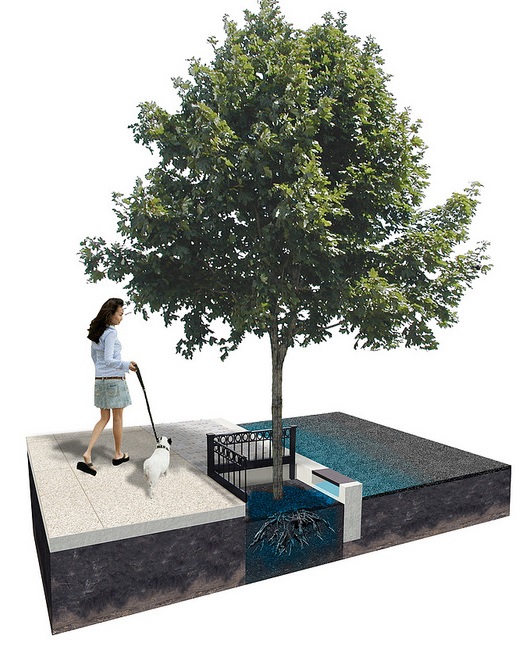
Stormwater trees look like typical street trees, but they have a deep stone pit to help manage stormwater. While a tree trench has multiple trees in one trench, stormwater trees are planted individually.
